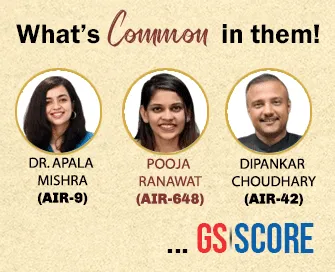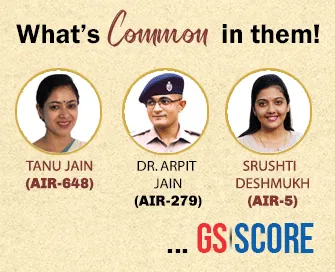

24th July 2025 (15 Topics)
Mains Issues
Context
The Supreme Court has issued notices in response to a Presidential Reference seeking its advisory opinion on whether the President and State Governors can be judicially mandated to act within a specified timeframe regarding assent to Bills passed by State Legislatures.
- Background and Constitutional Basis
Article 200 and 201 of the Constitution:
- Article 200 empowers the Governor to assent, withhold assent, reserve for the President, or return a Bill (except money Bills) to the State Legislature.
- Article 201 allows the President to either assent or withhold assent for reserved Bills, with no explicit timeline provided for such action.
Article 143(1): Presidential Reference
- Enables the President to seek the opinion of the Supreme Court on questions of law or fact of public importance.
- The Court may render its advisory opinion, but is not constitutionally bound to do so.
- Judicial Developments:
Tamil Nadu vs Governor Case (2024):
- The Supreme Court condemned the delay of over a year by the Tamil Nadu Governor in dealing with 10 re-passed Bills.
- It ruled that such conduct undermines the federal structure, asserting that Governors must act within a "reasonable time", though not defined precisely.
Introduction of Judicial Timelines:
- The Court laid down judicially enforceable limits on how long Governors and the President can withhold assent.
- It emphasized that constitutional morality demands non-subversion of legislative intent.
- Constitutional and Legal Questions Raised in Reference
Can Courts Direct Timelines on Constitutional Authorities?
- The Reference questions the judiciary’s power to regulate the timelines within which discretionary constitutional roles (like assent) must be exercised.
Can Presidential Reference Overturn Judicial Verdicts?
- The Court has clarified through Cauvery Water Dispute case (1991) and Natural Resources Allocation (2012) that Article 143 cannot be used to overturn binding rulings under Article 141.
- However, clarification or refinement of prior rulings is permissible as long as the original rights and ratio decidendi remain intact.
Way Forward
- Codification of Timelines: Parliament or State Legislatures should consider amending Articles 200 and 201 to prescribe fixed timelines, similar to those for money Bills under Article 111.
- Judicial Prudence and Balance: Courts must exercise caution while interpreting discretionary constitutional powers to avoid excessive judicial overreach into the executive domain.
- Strengthening Federalism: The office of the Governor must be held to a standard of political neutrality to uphold cooperative federalism as envisaged in the Constitution.
- Limiting Political Misuse of Article 143: The President’s advisory power must not be converted into an instrument for political review of judicial verdicts already settled under Article 141.


Mains Issues
Context
The Ministry of Development of North Eastern Region (MDoNER) has highlighted key schemes such as PM-DevINE, NESIDS, and NEC Schemes, aimed at bridging developmental gaps in the North Eastern Region (NER), especially during the 15th Finance Commission cycle (2022–2026).
Prime Minister’s Development Initiative for North Eastern Region (PM-DevINE):
- Launched: In Union Budget 2022–23 as a Central Sector Scheme.
- Outlay: ?6,600 crore for 2022–23 to 2025–26.
- Objectives:
- Funding infrastructure in alignment with PM GatiShakti.
- Supporting social development projects based on regional needs.
- Enabling livelihood creation for youth and women.
- Filling sectoral development gaps through convergence.
North East Special Infrastructure Development Scheme (NESIDS) – Roads:
- Launched in 2017–18 and extended till 31 March 2026.
- Provides gap funding for roads/bridges not covered by other central departments like MoRTH, BRO, DoRD.
- Key Focus:
- Improve connectivity to remote and border areas.
- Enhance access to markets.
- Strengthen security infrastructure.
NESIDS – Other Than Road Infrastructure (OTRI):
- Also a Central Sector Scheme, extended till 2026.
- Subsumes NLCPR and HADP schemes.
- Covers sectors like Primary/Secondary Health & Education, Water Supply, Waste Management, Civil Aviation, Telecom, Sports, etc.
- Accepts projects of ?5 crore to ?50 crore.
Schemes of North Eastern Council (NEC):
- Extended from 01 April 2022 to 31 March 2026, co-terminus with the 15th Finance Commission period.
- Covers all eight North Eastern States.
- Focus Areas: Bamboo, Piggery, Tourism, Higher Education, Tertiary Healthcare, and Livelihood promotion.
- Projects implemented through State Governments and Central Agencies under NEC’s guidance.


Mains Issues
Context
Environmental experts and public health advocates have drawn parallels between the plastic and tobacco industries for their shared strategies in deflecting responsibility, misleading the public, and exacerbating environmental and health crises.
Plastic Pollution, Public Health, and Regulatory Accountability in India and the Global South
- Parallels Between Plastic and Tobacco Industries
- Profit Over Public Health and Environment:
- Both industries have a history of prioritizing profits despite irrefutable evidence of harm caused by their products.
- Shifting the Blame:
- Tobacco: Advertising often emphasizes personal choice, despite systemic addiction issues.
- Plastics: Corporates blame consumers for low recycling rates, rather than acknowledging systemic failure in plastic waste management.
- Greenwashing and Misleading Science:
- Tobacco: Funded pseudoscientific studies to question health risks.
- Plastics: Promoted recycling and “biodegradable” labels while being aware of their impracticality.
- Targeting the Global South
- Exploiting Weak Regulations:
- As developed countries tighten controls on plastic use, producers shift focus to low- and middle-income nations with weaker environmental laws.
- Projected Consumption Trends:
- According to OECD’s Global Plastics Outlook (2022):
- Plastic consumption is expected to double in Sub-Saharan Africa and triple in Asia by 2060.
- Only a 15% increase projected in Europe in the same period.
- Lobbying Influence:
- Fossil fuel and chemical industries are increasingly influencing UN treaty talks on plastics.
- At INC-3 (Intergovernmental Negotiating Committee), industry lobbyists outnumbered previous rounds by 36%.
- India’s Plastic Waste Ecosystem
- Informal Sector’s Role:
- Over 70% of recycled plastic in India is handled by the informal sector (ragpickers, sorters, recyclers).
- Workers face health hazards and lack formal recognition, social security, or protective equipment.
- Policy Interventions:
- National Action for Mechanised Sanitation Ecosystem (NAMASTE) Scheme, 2024:
- Integrates waste pickers into the formal waste management system.
- Provides PPE, Ayushman Bharat health insurance, and access to social security.
- As of May 2025, over 80,000 workers profiled under the scheme.
- Plastic Waste Management (PWM) Rules, 2016 (amended 2022):
- Extended Producer Responsibility (EPR): Mandates manufacturers to manage lifecycle of plastics they produce.
- National Action for Mechanised Sanitation Ecosystem (NAMASTE) Scheme, 2024:
- Challenges and the Way Forward
- Enforcement Gap:
- Despite strong legislation like PWM Rules, enforcement remains inconsistent across states.
- Informal sector integration is still at a nascent stage in most urban local bodies.
- Greenwashing vs Real Solutions:
- Mislabeling of products as “biodegradable” without enforceable standards misleads consumers.
- Global Treaty and India's Role:
- India should push for a binding global plastics treaty with accountability mechanisms for producers.
- Ensure representation of waste pickers and vulnerable communities in treaty negotiations.
- Public Awareness and Behavioural Change:
- Strengthen citizen awareness programs against single-use plastic.
- Promote responsible consumption and waste segregation at source.
- Technology & Innovation:
- Incentivize R&D in sustainable packaging and scalable plastic alternatives.


Mains Issues
Context
India has achieved 20% ethanol blending in petrol (E20) by 2025, five years ahead of the original 2030 target, prompting discussions on moving towards E27 and E85 grades and corresponding policy and automotive adaptations.
Ethanol Blending Programme (EBP):
- Ethanol blending involves mixing ethanol, a biofuel primarily derived from sugarcane or biomass, with petrol.
- The National Policy on Biofuels (2018) had set a target of 20% ethanol blending by 2030. India has now achieved this target by 2025, significantly ahead of schedule.
Grades of Blending:
- E20: 20% ethanol + 80% petrol – now commercially implemented across India.
- E27: Proposed to be introduced by 2030.
- E85: High-blend ethanol fuel (85% ethanol) for flex-fuel vehicles – Government has notified draft rules for manufacturing such vehicles.
Automotive and Fuel Compatibility:
- Older vehicles may not be compatible with E20 or higher blends.
- Society of Indian Automobile Manufacturers (SIAM) has indicated readiness with engine modifications.
- Companies like Maruti Suzuki, Hyundai, Tata Motors, and Mahindra have showcased flex-fuel vehicles.
Economic and Environmental Impact:
- As per the Ministry of Petroleum and Natural Gas, between 2014 and July 2021:
- India saved ?26,000 crore in foreign exchange.
- Reduced GHG emissions by 19.2 million tonnes.
- However, ethanol from sugarcane increases stress on water and land.
- Environmentalists advocate the use of lignocellulosic biomass (e.g., crop residue, wood chips) for second-generation ethanol production.
Challenges and Concerns:
- Lower energy content in ethanol ? Reduced mileage.
- No proportional fuel price reduction despite import savings.
- Concerns about engine wear and lack of fuel cost benefits to consumers.
- Ethanol production from sugarcane may exacerbate water scarcity and impact food security.
Institutional and Policy Framework:
- MoPNG (Ministry of Petroleum and Natural Gas): Nodal agency for ethanol blending implementation.
- NITI Aayog: Policy think tank advocating balanced approach, including second-generation ethanol.
- Ministry of Road Transport and Highways: Notified draft changes to Central Motor Vehicle Rules (1989) for flex-fuel engine compliance.


Prelims Articles
Context
The Ministry of Culture is celebrating the birth anniversary of Rajendra Chola I through the Aadi Thiruvathirai Festival (23–27 July 2025) at Gangaikonda Cholapuram, marking 1,000 years of his Southeast Asian maritime expedition and the construction of the Chola capital temple.
Rajendra Chola I and Maritime Expansion:
- Rajendra Chola I ruled from 1014 to 1044 CE, expanding the Chola Empire to parts of Sri Lanka, Maldives, and Southeast Asia, including Srivijaya (present-day Indonesia, Malaysia, and Thailand).
- He launched a successful naval expedition to Southeast Asia, asserting Indian maritime strength, and promoting trade and diplomatic ties.
- He established Gangaikonda Cholapuram as his imperial capital after these conquests.
Chola Temple Architecture and Cultural Patronage:
- The Brihadisvara Temple at Gangaikonda Cholapuram, built by Rajendra Chola I, is a UNESCO World Heritage Site under the “Great Living Chola Temples.”
- The temple showcases Dravidian architecture, intricate bronze iconography, and extensive inscriptions chronicling the Chola administration, military campaigns, and religious grants.
- The Cholas were ardent patrons of Shaivism, supporting the Nayanmars and Shaiva Siddhanta philosophy.
Aadi Thiruvathirai Festival:
- The festival commemorates Rajendra Chola’s birth star – Thiruvathirai (Ardra), which begins on 23rd July.
- The event integrates Bharatanatyam, Devaram chanting, and musical tributes, reflecting the Shaiva Bhakti tradition and classical Tamil art forms.
- The Archaeological Survey of India (ASI) is conducting exhibitions, guided tours, and heritage walks to promote awareness of Chola-era achievements.


Prelims Articles
Context
The Election Commission of India has commenced preparatory activities for the 2025 Vice-Presidential election after the resignation of incumbent Vice-President Jagdeep Dhankhar due to health reasons.
Constitutional Mandate:
- The election to the office of the Vice-President is governed by Article 66 of the Indian Constitution.
- The Election Commission of India (ECI) is empowered to conduct this election under Article 324, which vests the superintendence, direction, and control of elections in the ECI.
Statutory Framework:
- The Presidential and Vice-Presidential Elections Act, 1952 and the Presidential and Vice-Presidential Elections Rules, 1974 regulate the procedure for conducting the election.
- The Returning Officer is appointed by convention from either the Secretary General of the Lok Sabha or Rajya Sabha, on a rotational basis. Two senior officers from the Parliament Secretariat are appointed as Assistant Returning Officers.
Electoral College Composition:
- The Vice-President is elected by an Electoral College comprising both elected and nominated members of the Lok Sabha and Rajya Sabha.
- Unlike the Presidential election, members of State Legislative Assemblies do not participate in the Vice-Presidential election.
- The election is conducted by the system of proportional representation by means of a single transferable vote and the voting is done by secret ballot.
- Party whips do not apply to members while voting in this election, affirming the independence of vote.
Nomination Requirements:
- A candidate’s nomination must be proposed by at least 20 electors and seconded by another 20 electors, all of whom must be members of the Electoral College.
Importance of Timely Election:
- Article 68(2) of the Constitution provides that an election to fill a vacancy in the office of the Vice-President occurring by resignation, death, removal, or otherwise before the expiry of the term shall be held as soon as possible, and the person elected shall hold office for a full five-year term.


Prelims Articles
Context
The Department of Posts (DOP) has undertaken comprehensive reforms under the Post Office Act, 2023, focusing on digital governance, infrastructure modernization, and service outreach, especially in rural India, as detailed in a recent press release by PIB dated 23 July 2025.
Legislative Reform and Digital Infrastructure:
- Post Office Act, 2023 came into force on 18 June 2024, replacing the archaic Post Office Act, 1898.
- It introduces a technology-neutral legal framework, aligning with digital governance principles.
- The Core System Integrator (CSI) supports mail, accounting, and HR activities, while CBS (Core Banking Solution) and CIS (Core Insurance Solution) integrate financial and insurance services.
Key Digital and Delivery Enhancements:
- 188 Parcel Hubs and 234 Nodal Delivery Centers established; handling 30% of India’s daily parcel volume.
- 450 Post Office Passport Seva Kendras (POPSKs) enhance accessibility to passport services.
- Real-time tracking through mobile apps and SMS alerts for Speed Post and Registered Post ensures transparency.


Prelims Articles
Context
In light of China's imposition of strict export controls on rare earth magnets, India has intensified diplomatic outreach to secure alternative sources for rare earth elements (REEs), essential for strategic industries.
Strategic Importance of Rare Earth Elements (REEs):
- Rare earth magnets are critical for several high-end applications in defence, electronics, clean energy, electric vehicles, and renewable technologies. These magnets are made from rare earth oxides such as neodymium, praseodymium, and dysprosium.
India’s Resource Base and Export Status:
- India possesses approximately 23 million tonnes of rare earth oxides. Despite this, India exported only 18 tonnes of REE minerals in the last decade, reflecting a low level of downstream processing capability and dependence on imports for high-end applications.
Geological Survey of India (GSI) Findings:
- GSI has augmented 6 million tonnes of REE ore resources through 34 exploration projects, indicating untapped domestic potential.
India’s Diplomatic Engagements for REE Security:
- India has begun intergovernmental negotiations with countries like Brazil and the Dominican Republic, and initiated multilateral engagements with global institutions such as the International Energy Agency (IEA). Further, MoUs are being pursued with Australia, Argentina, Zambia, Peru, Zimbabwe, Mozambique, Malawi, and Côte d’Ivoire, all of which are mineral-rich nations.
Institutional Coordination in India:
- The Ministry of Mines, Ministry of External Affairs, and Department of Atomic Energy are jointly pursuing a multi-pronged strategy involving geological exploration, bilateral diplomacy, and MoU signing for mineral cooperation.
China’s Strategic Leverage and Global Impact:
- China controls a dominant share of rare earth processing and trade, giving it significant geo-economic leverage in strategic supply chains. India’s move can be seen as a counterbalancing initiative aimed at de-risking critical mineral dependencies.


Prelims Articles
Context
A new large-scale study published in The Lancet Psychiatry highlights a potential causal link between neonatal vitamin D levels and reduced risk of psychiatric and neurodevelopmental disorders such as schizophrenia, ADHD, and autism.
Vitamin D – Biological Role:
- Vitamin D is a fat-soluble vitamin crucial for calcium absorption, bone health, immune function, and neuromuscular operations.
- It exists in two primary forms: D? (ergocalciferol) and D? (cholecalciferol).
- The body synthesizes Vitamin D? when the skin is exposed to UVB rays of sunlight.
Study Relevance:
- The Danish cohort study measured neonatal levels of 25-hydroxyvitamin D [25(OH)D] and Vitamin D-binding protein in over 88,000 individuals.
- It found that higher levels of neonatal Vitamin D are statistically associated with a lower risk of schizophrenia (18%), ADHD (11%), and autism (7%).
- No significant associations were found with depression or bipolar disorder.
Epidemiological Methods Used:
- Polygenic Risk Score (PRS): Used to correlate genetically predicted vitamin D levels with neurodevelopmental outcomes.
- Mendelian Randomisation: Applied to test causality by examining whether inherited gene variants affecting vitamin D levels correlate with lower disorder risk.
Indian Context – Deficiency Despite Sunlight:
- High prevalence of Vitamin D deficiency in Indian pregnant women and newborns despite tropical climate.
- Studies:
- AIIMS Rishikesh (2017-18): 74% of infants and 85.5% of mothers deficient.
- Bengaluru: 92.1% of newborns deficient.
- Bundelkhand (2024): Strong correlation between maternal and neonatal vitamin D levels.


Prelims Articles
Context
A recent commentary in The Hindu highlights India’s rapidly rising obesity burden, especially its links with cancer risk, urging for a shift in policy focus toward household-level and community-based prevention strategies.
Obesity – Definition and Classification:
- Obesity is defined as abnormal or excessive fat accumulation that presents a health risk.
- The Body Mass Index (BMI) is a key indicator: BMI ?25 is classified as overweight, and BMI ?30 as obese.
India’s Obesity Landscape:
- According to recent national data:
- Nearly 20% of Indian households have all adults overweight.
- 10% of Indian households have all adults obese.
- Urban obesity is significantly higher than rural, showing clear socio-economic and lifestyle patterns.
- States like Tamil Nadu and Punjab report 2 out of every 5 households with all adults classified as overweight or obese.
Link with Cancer and NCDs:
- As per IARC (2023), obesity increases cancer risk significantly:
- Increases cancer risk by 17% for individuals with pre-existing cardiovascular conditions.
- Linked to 13 types of cancers, including breast, colorectal, oesophageal, and gallbladder cancers.
- Obesity fuels chronic inflammation, a major risk factor for:
- Insulin resistance
- Cardiovascular diseases
- Cancer
- Type-2 diabetes


Prelims Articles
Context
The Indian Council of Medical Research (ICMR) has announced a promising candidate malaria vaccine named ‘AdVacFluVac’, aimed particularly at the Plasmodium falciparum parasite, marking a significant advancement in India’s public health and immunisation efforts.
Global and National Burden of Malaria:
- Malaria remains a significant public health challenge, with ~400,000 global deaths annually, primarily in sub-Saharan Africa and South Asia.
- In India:
- Malaria cases declined from 2.93 million (1995) to 0.18 million (2022).
- Deaths reduced from 1,151 (1995) to 83 (2022), as per National Vector Borne Disease Control Programme.
About AdVacFluVac:
- Developed by ICMR, targeting Plasmodium falciparum, responsible for the most severe form of malaria.
- Developed in collaboration with private partners.
- Uses circumsporozoite protein (CSP), a surface protein expressed by the parasite during infection.
Mechanism of Action:
- Mimics the sporozoite stage of the malaria parasite to generate an immune response.
- Produces high titres of neutralising antibodies that block parasite development inside liver cells.
- Works similarly to RTS,S and R21 vaccines but aims to improve protection and reduce logistical challenges.
Comparative Advantage of AdVacFluVac:
- Requires fewer doses than RTS,S (which needs four doses).
- Shown to be safe and immunogenic in pre-clinical studies.
- May offer better thermal stability, a major factor for distribution in tropical regions.
- Designed to be produced domestically at scale in India.
Global Vaccine Landscape:
- WHO-approved vaccines:
- RTS,S/AS01 (Mosquirix) – First malaria vaccine approved for pilot use.
- R21/Matrix-M – Recently approved with improved efficacy.
- India’s AdVacFluVac adds to this arsenal with indigenous technology and manufacturing capability.


Prelims Articles
Context
The 9th edition of Swachh Survekshan, conducted under the Swachh Bharat Mission-Urban, was recently released, expanding its scope to over 4,500 cities and revising evaluation categories to better reflect urban sanitation performance.
About Swachh Survekshan and SBM (Urban):
- Swachh Survekshan is an annual cleanliness survey conducted by the Ministry of Housing and Urban Affairs (MoHUA) under the Swachh Bharat Mission (Urban).
- Initiated in 2016, it started with fewer than 100 cities and has now scaled up to assess over 4,500 urban local bodies (ULBs).
- The 2024-25 edition introduced the Super Swachh League, dividing cities into five population categories for fairer competition.
Evaluation Parameters and Innovations:
- The survey evaluates cities on 10 key parameters, including waste segregation, scientific processing of waste, sanitation worker welfare, and citizen feedback.
- It incorporates third-party verification and inputs from over 140 million residents, ensuring robustness and transparency.
- Best practices include Indore’s six-way waste segregation, Surat’s sewage reuse, and Agra’s bioremediation of legacy dumpsites.
Themes and Policy Implications:
- The 2025 theme of ‘Reduce, Reuse, Recycle (RRR)’ builds upon the previous year's ‘Waste to Wealth’, aiming to create green jobs, micro-enterprises, and boost the circular economy.
- Despite infrastructure growth, behavioural transformation in citizen participation and ULB enforcement remains a key challenge.
- Tourism-linked cities were specially assessed, aligning sanitation with broader economic potential and urban aesthetics.


Editorials
Context
Recent incidents of aggression and spectacle surrounding the Kanwar Yatra have prompted debates about the loss of its original spiritual ethos and the growing disconnect between ritual form and devotional substance.
Cultural and Ethical Foundations of the Kanwar Yatra
- Sacred Purpose of the Yatra: Traditionally, the Kanwar Yatra symbolised personal penance, humility, and collective spiritual rejuvenation during the holy month of Shravan.
- Pilgrimage as Ethical Practice: Thinkers like Mircea Eliade describe pilgrimage as a spiritual transformation—a retreat from the profane to the sacred, reconnecting humanity with divinity.
- Distortion through Violence and Spectacle: The recent weaponisation and display of aggression by some kanwariyas contradicts the pilgrimage’s moral core and its intent to foster inner purification.
Lived Memories and Shared Sacredness
- Transmission of Blessings: A personal account of an elderly woman who undertook the yatra highlights the belief that her spiritual merit could be shared with others through humble service.
- Ritual and Inclusivity: The Yatra traditionally transcended caste and class, fostering unity among pilgrims (bams) and generating acts of compassion and shared devotion.
- Performative Piety and its Loss: As pilgrimage becomes a spectacle, its inner discipline and quiet divinity risk being replaced by display, undermining the emotional and communal depth it once offered.
Symbolic Continuity and Cultural Memory
- Myth and Devotional Legacy: The sacred month of Shravan and the journey to Baidyanath Dham reflect a long-standing symbolic dance of devotion, sacrifice, and hardship in Indian religious culture.
- Songs of Pain and Divinity: Folk songs like “Baba ho virage Odiya desh me” commemorate shared religious histories of Bihar and Odisha, reflecting pluralistic devotion across regions.
- Modern Disconnect from Sacred Symbolism: In contemporary times, people engage with religious symbolism without understanding its essence, reducing it to noise rather than a means of ethical awakening.
Practice Question:
The increasing ritualisation and performative nature of Indian religious practices risk diluting their ethical and spiritual core. Critically examine this statement in the context of Kanwar Yatra and its contemporary transformation. (250 words)


Editorials
Context
The May 2025 India-Pakistan conflict, use of AI-enabled drones, and evolving patterns of multi-domain warfare have highlighted a decisive global shift in the nature, strategy, and technology of modern conflict, necessitating an urgent reappraisal of India’s defence preparedness and doctrine.
Historical Illusions and Geopolitical Shifts
- End of Traditional Order: The foundational norms of international politics rooted in the Peace of Westphalia (1648) and Congress of Vienna (1815) are rapidly eroding, with power increasingly dictated by technological dominance and not legal-structural norms.
- Myth of Post-War Peace: While 2025 marks 80 years since the end of World War II, peace has been largely superficial — proxy wars, regional conflicts (e.g., Korea, Vietnam), and selective interventions continued to undermine the so-called "rules-based order."
- Desert Storm and Tactical Transformation: Operation Desert Storm (1991) was a watershed moment in military evolution, introducing three-dimensional precision warfare that has since transformed strategic doctrines globally, though its full implications were only gradually acknowledged.
Changing Character of Conflict in the 21st Century
- Post-Cold War and 9/11 Repercussions: Contrary to Fukuyama’s “end of history” thesis, the post-1989 world witnessed a rise in asymmetrical warfare, with 9/11 serving more as a pretext for interventionism rather than a marker of doctrinal change in warfare.
- Ukraine and West Asia as Doctrinal Turning Points: The ongoing Ukraine war and West Asian conflicts demonstrate that wars today are no longer about ground dominance alone; they involve coordinated cyber-attacks, satellite-based surveillance, drone strikes, and information warfare.
- India-Pakistan Conflict 2025: A Preview of Future Wars: The May 2025 confrontation showcased a paradigm shift with loitering munitions, AI-backed drones, advanced GPS-guided bombs, and hypersonic weapons playing a central role — a marked deviation from conventional warfare.
India’s Strategic Dilemma and Defence Preparedness
- Obsolescence of Traditional Procurement Models: India’s reliance on legacy platforms like Rafale jets and outdated tender frameworks risks strategic irrelevance in a world moving toward unmanned, AI-based combat platforms and hypersonic delivery systems.
- Gaps in Indigenous Capability and Technological Lag: China's rapid progress — including J-10, J-20, and near-development of sixth-generation fighter jets — contrasts with India’s delays in aircraft and missile development, leaving critical gaps in autonomous warfare readiness.
- Need for Multi-Domain Force Modernisation: The shift towards network-centric warfare mandates overhaul of India's doctrinal approach, with a focus on integrated AI, cyber-defence, long-endurance UAVs, and digital battlefield awareness systems to secure national interests in a potential two-front scenario.
Practice Question:
The Russia-Ukraine war and Indo-Pakistan conflict reveal a fundamental transformation in the conduct of warfare. Examine how emerging technologies are redefining modern military doctrines, and suggest how India must recalibrate its defence strategy in response. (250 words)


Editorials
Context
Growing consensus among scientists, ethicists, and lawmakers underscores the urgent need to shift from animal-based testing to lab-grown biological models, driven by both ethical considerations and advancements in regenerative medicine.
Ethical Dimensions and Historical Context
- Moral Responsibility Towards Non-Human Beings: Human superiority over animals imposes a moral obligation to treat them with dignity, compassion, and protection, especially given animals' dependence on humans for their welfare.
- From Human to Animal Experimentation: A Troubled Legacy: Early 20th-century human feeding trials in the U.S. gradually gave way to animal testing due to the unpredictability of human physiology, raising ethical concerns over the routinisation of experimental cruelty.
- Inefficacy of Animal Testing for Human Application: Empirical studies increasingly confirm that results from animal testing often fail to reliably predict human responses, making such methods both ethically and scientifically questionable.
Scientific Alternatives and Technological Readiness
- Emergence of Regenerative Medicine and Tissue Engineering: Significant advances now allow cultivation of artificial organs—such as pancreas, skin, cartilage, and heart tissue—enabling safer and more targeted medical experimentation.
- Policy Reform and Legal Amendments Suggested: To institutionalise humane practices, the Prevention of Cruelty to Animals Act, 1960 should be amended to mandate, wherever feasible, the use of lab-grown anatomical parts in place of live animals.
- Accelerating the Use of Digital and Anatomical Models: Modern pedagogical and research tools like 2D radiography and 3D anatomical imaging can fully replace animal dissections in education, reinforcing ethical scientific practices.
Strategic Roadmap for Implementation
- Institutional and Legal Reforms Required: Merely enacting laws will not suffice; recognising animals as sentient beings with rights is essential for establishing enforceable and compassionate research protocols.
- Coordinated Action with Research Institutions: A robust interface must be established between research labs and tissue engineering bodies to ensure timely availability and adoption of bioartificial organs for testing purposes.
- Cultural and Value-Based Transformation Needed: The shift must go beyond procedural change—scientific consciousness, public awareness, and value reorientation are critical to ending moral indifference to animal suffering.
Practice Question:
With reference to the ethical and scientific debates surrounding animal testing, critically examine the feasibility and implications of replacing animal models with tissue-engineered biological systems in research and education. (250 words)



